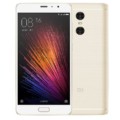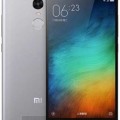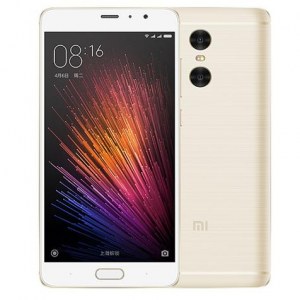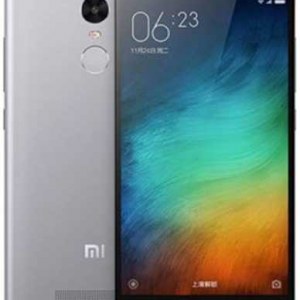Xiaomi Redmi Pro vs Xiaomi Redmi Note 3
Xiaomi, which has already launched 3 new smartphones this year in India, and is going to launch another device, Xiaomi Redmi Pro. It is already available in China from last week with Mediatek processor with 3/4 GB RAM. Today we are going to compare it with already present device in India, Xiaomi Redmi Pro vs Redmi Note 3.
Additionally, Another device that got confirmed for its India launch is Xiaomi Redmi 3S. It has the look and feel of the Redmi Note 3 if you go by the photos based on the company’s China website.
So, we are going to compare mobiles from same company i.e Redmi Pro vs Redmi Note 3.
Xiaomi Redmi Pro
Xiaomi Redmi Pro is revealed last week with its huge specs. The device runs with Helio X20 SoC and Helio X25 SoC on 3GB and 4GB RAM variants respectively.
Xiaomi Redmi Pro comes with a rear dual camera setup – consisting of a 13MP main unit and a 5MP depth sensor. There’s a 5 megapixel shooter on the front. As per the claims from company, it can produce DSLR like images using its dual camera technology.
In power section, there are two high-performance Cortex A72 cores clocked at 2.5GHz, joined by four Cortex A53 cores at 2.0GHz, and four additional Cortex A53 cores at 1.5GHz. There are two variants of device, one with 3GB RAM and 64GB storage and is fixed by Helio X20 SoC. Further, there’s a 4GB RAM and 64GB storage device with Helio X25 SoC.
Further, on additional features, there’s a fingerprint scanner on the front as like of the Xiaomi Mi 5. In connectivity, USB-C is available and phone supports VoLTE, and a 4050mAh battery. It is a dual SIM device and measures 151.5 x 76.2 x 8.15mm and weighing in at 174g.
The Helio X25 model with 3GB of RAM and 64GB storage will set customers back ¥1,699 ($255). The high-end variant with Helio X25, 4GB of RAM and 128GB flash storage will debut for ¥1,999 ($300).
Xiaomi Redmi Note 3
Xiaomi Redmi Note 3 packs a 5.5-inch Full HD IPS LCD display, Snapdragon 650 SoC with four Cortex A53 cores clocked at 1.4GHz and two newer Cortex A72 cores at 1.8GHz. Further, Redmi Note 3 has got 16MP camera with phase detection autofocus, 5MP front shooter with LTE connectivity, Wi-Fi ac, Bluetooth 4.1, and a 4000mAh battery. Redmi Note 3 is also the first Xiaomi phone to have a fingerprint sensor and the first Redmi phone to have a metal body. Xiaomi Redmi Note 3 has 150 x 76 x 8.69 mm dimensions with 154 grams.
There are two models of the phone one with 16 GB internal having 2GB of RAM and it retails at INR 9,999. While, other is 32GB variant which is priced at INR 11,999 along with 3GB of RAM.
-
Product Name
-
Product Image
-
Price
-
Our Rating
-
Brand
-
Category
Network
-


-
4G Network
-
3G Network
-
2G Network
Design
-


-
Type Design Type called form factor refers to a mobile phone's size, shape, and style as well as the layout and position of major components of phone. There are three major form factors seen in mobile phones => bar phones, folding phones and sliding phones.Bar Bar
-
Dimensions151.5 x 76.2 x 8.2 mm (5.96 x 3.00 x 0.32 in) 150 x 76 x 8.7 mm (5.91 x 2.99 x 0.34 in)
-
Weight174 g (6.14 oz) 164 g (5.78 oz)
-
Waterproof- Water Resistant
-
ColorsSilver, Gold, Gray Silver, Gray, Gold
Display
-


-
Display Type Display Technology => A number of display technologies and types used in mobile phones => TFT (Thin Film Transistor), IPS (In-Place Switching), OLED (Organic Light Emitting Diode), AMOLED (Active-Matrix Organic Light-Emitting Diode), Super AMOLED (an even advanced version of AMOLED), Resistive Touchscreen (Resistive touchscreens contain two layer of conductive material with a very small gap between them which acts as a resistance), Capacitive Touchsceen (Capacitive touchscreen technology consists of a layer of glass coated with a transparent conductor)OLED capacitive touchscreen IPS LCD capacitive touchscreen
-
Size5.5 inches 5.5 inches
-
Resolution1080 x 1920 pixels 1080 x 1920 pixels
-
Display Colors Display Colors is refers to the number of different shades of colors that the screen is capable of displaying => 64K colors, 256K colors and 16 million colors, Obviously 16M is highest available range of colors and better than others.16M colors 16M colors
-
Pixel Density Pixel Density (PPI) is refers to the concentration of pixels on a particular display, measured in pixels per inch (ppi). Pixel density is calculated by dividing the diagonal pixel resolution of a display by its diagonal size, higher pixel density better display quality.401 ppi pixel density 403 ppi
-
Touch ScreenYes Yes, Multitouch
-
Display Protection Display Protection => Gorilla Glass is a special alkali-aluminosilicate glass shield with exceptional damage resistance that helps protect mobile displays from scratches, drops, and bumps of everyday use, It is always better to go for a smartphone with Gorilla Glass for that added protection and peace of mind.= Oleophobic coating
-
FeaturesSMS(threaded view), MMS, Email, Push Mail, IM, HTML5, Java No
- XviD/MP4/H.265 player
- MP3/WAV/eAAC+/FLAC player
- Photo/video editor
- Document viewer LCD capacitive touchscreen
Software
-


-
Operating System OS => Every computer system run on a base software called Operating System (OS). Operating System controls all basic operations of the computer (such as smartphone, PDAs, tablet computers and other handheld devices). The Operating System allows the user to install and run third party applications (apps), apps are used to add new functionality to the device.Android OS, v6.0 (Marshmallow) Android OS, v5.1.1 (Lollipop)
-
Skin UI or user interface of a device is the look and feel of the on-screen menu system. How it works, its color scheme, how it responds to button presses, all of these things are part of the user interface.- MIUI 7
Hardware
-


-
Chipset Chipset is a group of integrated circuits designed to perform one or a more dedicated functions, often with real time computing constraints, Popular smartphones are equipped with more advanced embedded chipsets that can do many different tasks depending on their programming.Mediatek MT6797T Helio X25 - High & Exclusive editions/Mediatek MT6797 Helio X20 - Standard edition Qualcomm MSM8956 Snapdragon 650
-
CPU CPU (Central Processing Unit) mostly known as processors, CPU processes instructions in order to carry out certain functions that make your device operate properly. Processors are often described as the brain of computers, smartphones and tablets, Smartphones and tablets rely on processors to carry out their every task, Processors are an incredibly important factor in selecting any type of computing device, including your smartphone.Deca-core 2.5 GHz - Exclusive edition/Deca-core 2.3 GHz - High edition/eca-core 2.1 GHz - Standard edition Quad-core 1.4 GHz Cortex-A53 & Dual-core 1.8 GHz Cortex-A72
-
GPU GPU (Graphics Processing Unit) is a single-chip processor designed to rapidly manipulate and alter memory to accelerate the creation of images in a frame buffer intended for output to a display, This includes things such as lighting effects, object transformations, and 3D motion.Mali-T880 MP4 Adreno 510
-
RAM (Memory) RAM (Random Access Memory) is a type of computer memory that can be accessed randomly, any byte of memory can be accessed without touching the preceding bytes that allows information to be stored and accessed quickly from random locations. RAM is the most common type of memory found in computer systems, smartphones, tablets and other electronic devices.3 GB RAM/4 GB RAM 2/ 3 GB
-
Internal Storage Internal Storage is a data storage space (flash memory) mostly used in smartphones, tablets and other electronic devices where operating system, apps, music, photos, videos, files and other user data Is stored.32/64/128 GB 16/ 32 GB
-
Card Slot Memory Card Slot is a special slot for inserting a memory card. Memory cards allow you to expand the phone's built-in memory, A memory card (sometimes called a flash memory card or a storage card) is a small storage medium used to store data such as text, pictures, audio, and video, for use on small, portable or remote computing devices such as mobile phones, mp3 players, digital cameras.128 GB microSD, up to 256 GB (uses SIM 2 slot)
-
Sensors Sensors are electronic components that detects and responds to some type of input from the physical environment. The specific input could be light, heat, motion, moisture, pressure and location, The output is generally a signal that is converted to use in computing systems, a location sensor, such as a GPS receiver is able to detect current location of your electronic device.Fingerprint, accelerometer, gyro, proximity, compass Fingerprint, accelerometer, gyro, proximity, compass, Quick Charge 3.0
Camera
-


-
Primary Camera is able to capture photographs and usually videos, The most important characteristics of a camera are the resolution (measured in megapixels), lens focus type (fixed or automatic), higher megapixel cameras are known to capture higher quality photos, but not always a good measurement of the photos quality.13MP 16 MP
-
Video1080p@30fps, 720p@120fps 2160p@30fps, 1080p@30fps, 720p@120fps
-
Camera FeaturesGeo-tagging, touch focus, face detection, HDR, panorama, phase detection autofocus, dual-LED (dual tone) flash f/2.0, phase detection autofocus, Geo-tagging, touch focus, face/smile detection, HDR, panorama
Battery
-


-
Battery Type Battery Type => Cell phones run on various kinds of batteries depending on the manufacturer, phone size or shape and features. There are basically four types of cell phone batteries => Lithium Polymer, Lithium Ion, Nickel Metal Hydride and Nickel Cadmium.Li-Ion (Lithium Ion) Li-Poly (Lithium Polymer)
-
Capacity Battery Capacity is a measure (typically in Amp-hr) of the charge stored by the battery, and is determined by the mass of active material contained in the battery. The battery capacity represents the maximum amount of energy that can be extracted from the battery under certain conditions.Li-Ion 4050 mAh 4000 mAh
-
Standby Standby Time is the total amount of time that you can leave your is fully charged, turned on and ready to send and receive calls or data transmissions before completely discharging the battery.-
Connectivity
-


-
Bluetooth Bluetooth is a wireless communications technology for exchanging data between mobile phones, headsets, computers and other network devices over short distances without wires, Bluetooth technology was primarily designed to support simple wireless networking of personal consumer devices.v4.2, A2DP, LE v4.1, A2DP, LE
-
Wi-fi Wi-Fi is a popular wireless networking technology using radio waves to provide high-speed network connections that allows devices to communicate without cords or cables, Wi-Fi is increasingly becoming the preferred mode of internet connectivity all over the world.Wi-Fi 802.11 b/g/n, Wi-Fi Direct Wi-Fi 802.11 a/b/g/n/ac, dual-band, WiFi Direct
-
Infrared Infrared connectivity is an old wireless technology used to connect two electronic devices. It uses a beam of infrared light to transmit information and so requires direct line of sight and operates only at close range.
-
USBType-C 1.0 reversible connector microUSB v2.0, USB On-The-Go
-
GPS GPS The Global Positioning System is a satellite-based radio navigation system, GPS permits users to determine their position, velocity and the time 24 hours a day, in all weather, anywhere in the world, In order to locate your position, your device or GPS receiver must have a clear view of the sky.Yes, with A-GPS, GLONASS, BDS Yes, with A-GPS, GLONASS, BDS
-
NFC NFC (Near field communication) is a set of standards for smartphones and similar devices to establish peer-to-peer radio communications with each other by touching them together or bringing them into proximity, usually no more than a few inches.
-
Headphone Jack


